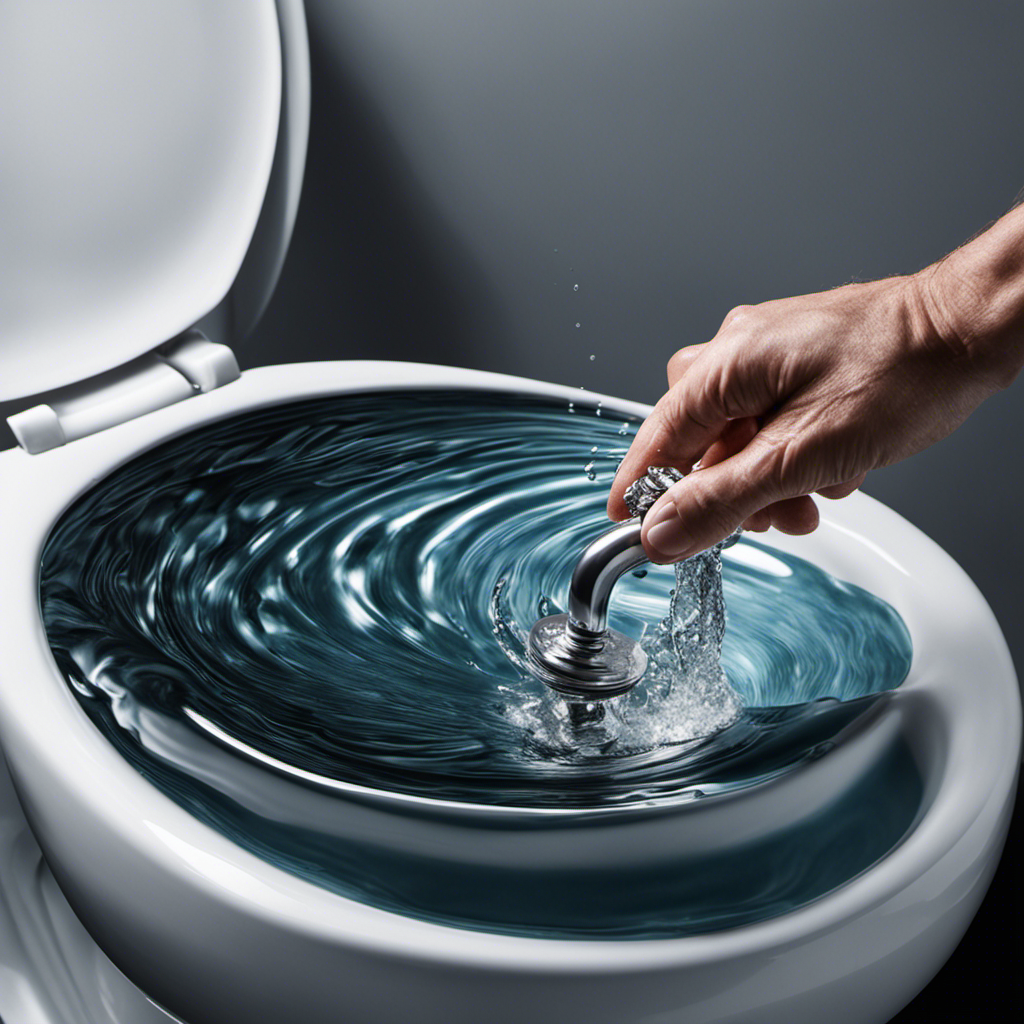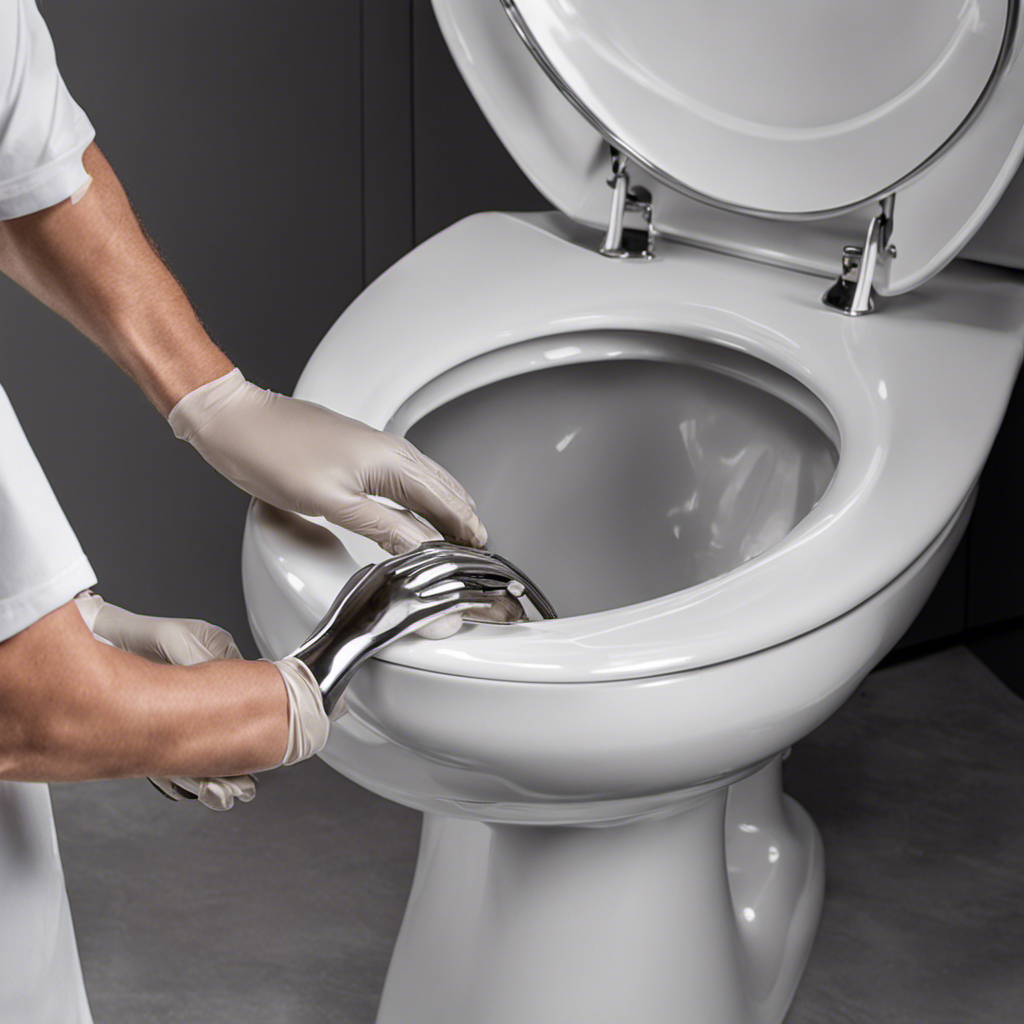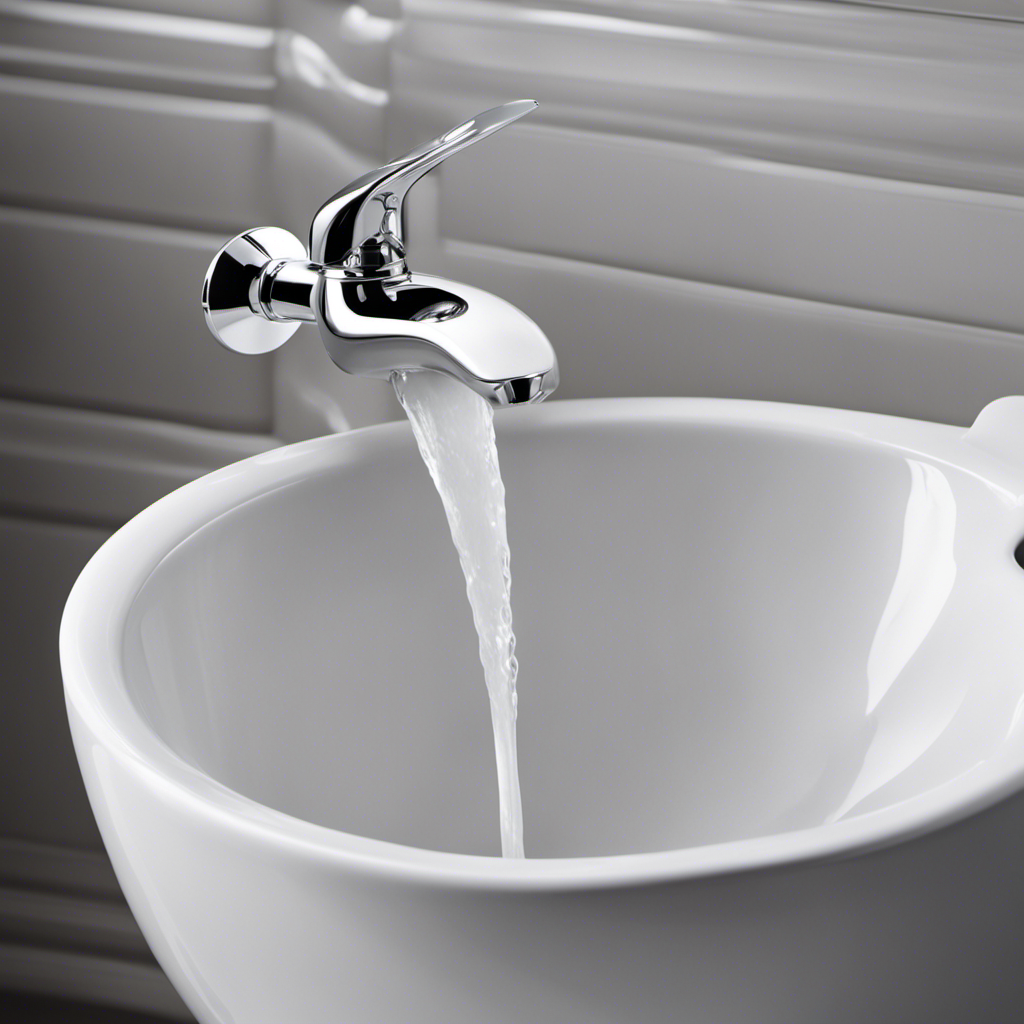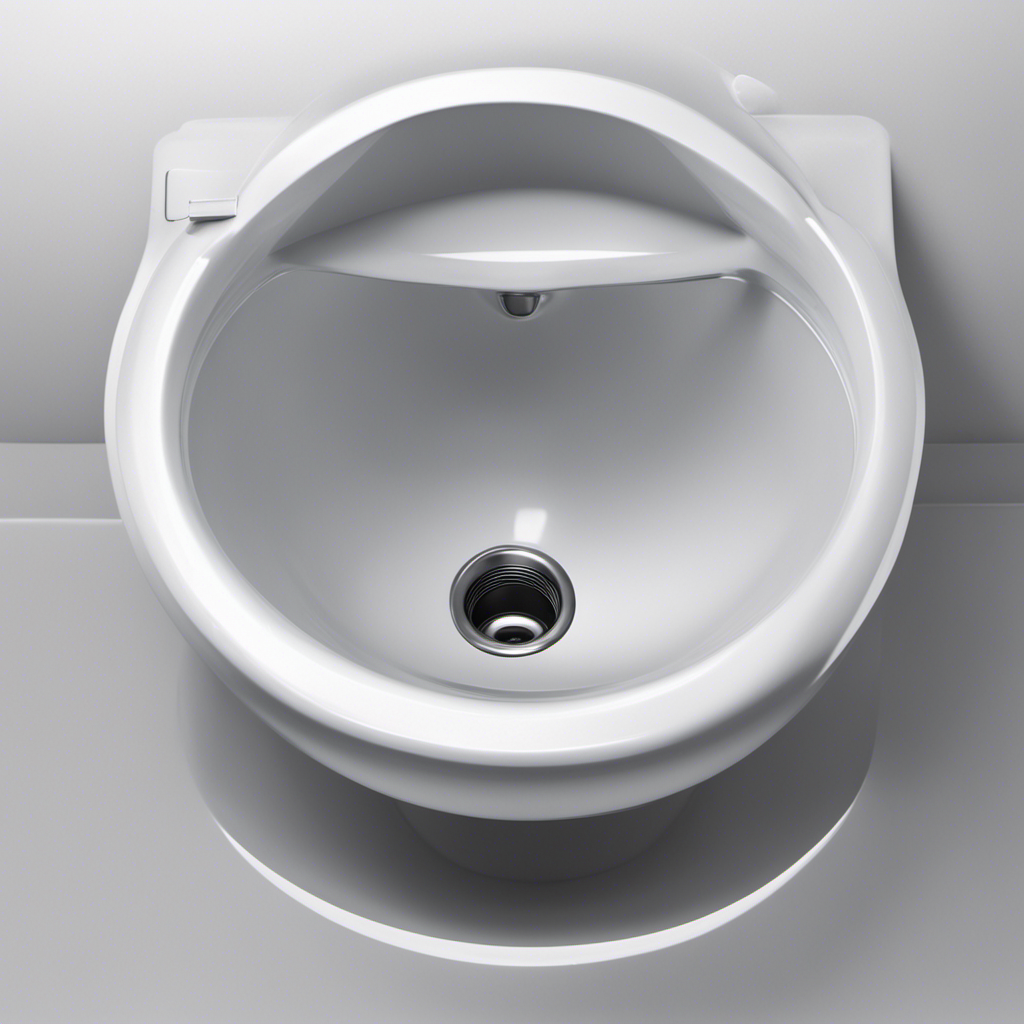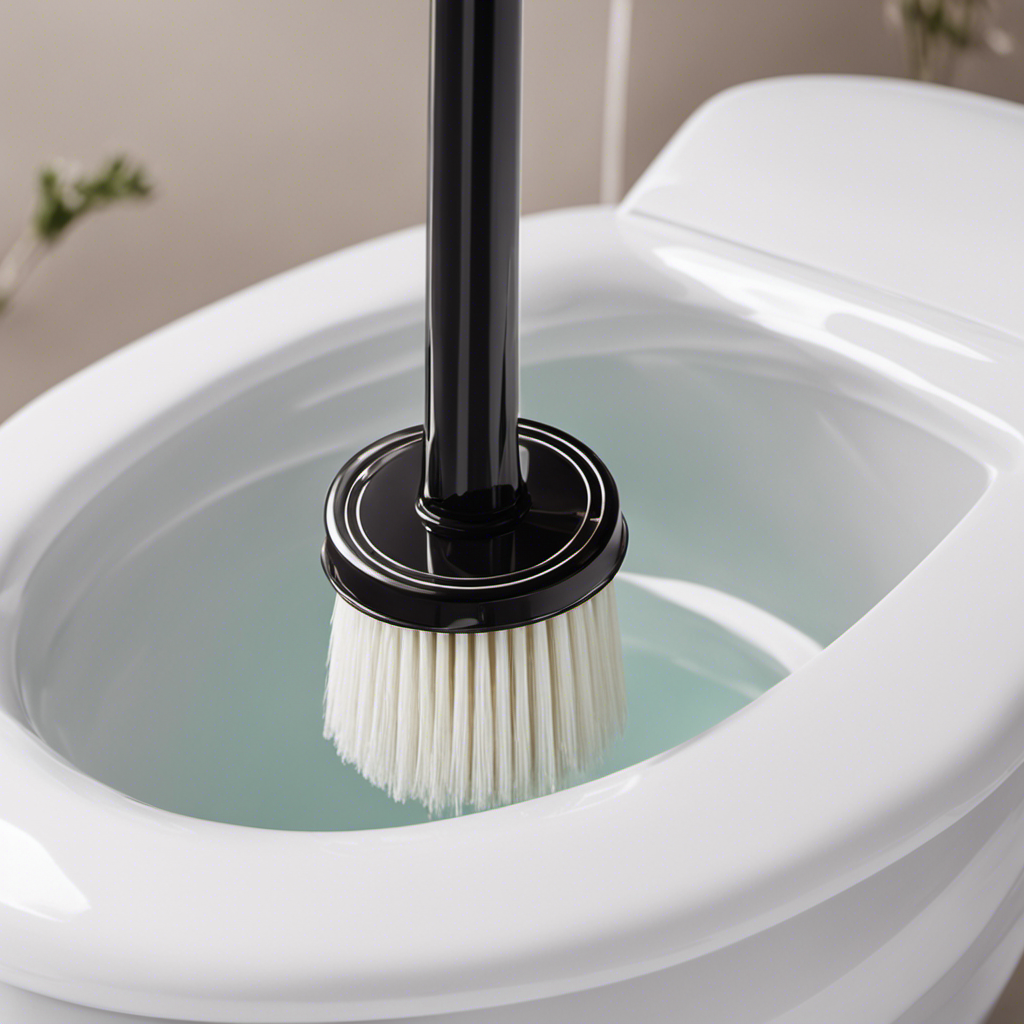As a homeowner, I’ve experienced the frustration of a weak toilet flush firsthand. It’s a problem that can leave you feeling helpless and annoyed.
But fear not! In this article, I’ll share with you my expert tips and techniques for getting your toilet to flush better. From simple fixes to upgrading your toilet, I’ve got you covered.
So sit back, relax, and get ready to say goodbye to those pesky flushing issues once and for all. Let’s dive in!
Key Takeaways
- Regularly cleaning the siphon jet holes is essential for a proper flush and to prevent clogs.
- Checking and adjusting the water supply valve, rim holes, and flapper can improve toilet flush performance.
- Upgrading the toilet flushing mechanism and adjusting water pressure can greatly enhance flush performance.
- Regular maintenance, such as inspecting and cleaning the flapper valve, adjusting water level, and clearing clogs, can improve toilet flush efficiency.
Common Causes of Poor Toilet Flush
One common cause of poor toilet flush is if you haven’t been cleaning the siphon jet holes regularly. The siphon jet holes are small openings located under the rim of the toilet bowl that help to create a strong flushing action.
Over time, these holes can become clogged with mineral deposits, debris, or even mold, which can significantly reduce the flow of water and affect the flushing performance. To unclog the siphon jet holes, you can use a small wire brush or a piece of stiff wire to gently remove any obstructions. It’s important to be gentle and avoid damaging the porcelain surface.
Regularly cleaning the siphon jet holes is essential to ensure a proper toilet flush and prevent future clogs.
Simple Fixes for Weak Toilet Flush
There are a few easy ways you can improve the flushing power of your toilet. If you’re dealing with toilet clogs or weak flushes due to low water pressure, here are three simple fixes to consider:
-
Check the water supply valve: Make sure the water supply valve behind your toilet is fully open. If it’s partially closed, it can restrict water flow and result in a weak flush.
-
Clean the rim holes: Over time, mineral deposits can build up in the rim holes of your toilet bowl, affecting the flow of water during a flush. Use a small wire brush to scrub away any debris and restore the water flow.
-
Adjust the flapper: The flapper is the rubber valve at the bottom of the tank. If it’s not opening fully, water may not be released quickly enough for a strong flush. Adjust the chain or replace the flapper if necessary.
Upgrading Your Toilet for Better Flush Performance
Upgrading your bathroom can greatly enhance the performance of your toilet’s flushing system. One effective way to improve the flush performance is to upgrade the toilet flushing mechanism. The flushing mechanism is responsible for initiating and completing the flushing process. By installing a high-quality flushing mechanism, you can ensure a more powerful and efficient flush.
Another crucial factor to consider is water pressure adjustment. The right water pressure is essential for a successful flush. If the water pressure is too low, it can result in weak flushing, while excessive water pressure can lead to water wastage. By adjusting the water pressure to the optimal level, you can achieve a better flush performance.
Upgrading your toilet with a reliable flushing mechanism and adjusting the water pressure will significantly improve the flushing efficiency of your toilet.
Maintenance Tips to Improve Toilet Flush Efficiency
To improve the efficiency of your toilet’s flush, regularly cleaning the inside of the tank and bowl is essential. Here are some maintenance tips to help you achieve a better flush:
-
Inspect and clean the flapper valve: Ensure that the flapper valve is in good condition and free from any debris or mineral buildup. If necessary, clean or replace it to ensure a tight seal.
-
Check and adjust water level: Verify that the water level in the tank is set correctly. Adjust the float or water level control valve if needed to maintain the recommended water level.
-
Clear any clogs or obstructions: If your toilet is not flushing properly, it may be due to a clog or obstruction in the trap or drain pipe. Use a plunger or auger to clear any blockages and improve the flow of water.
Troubleshooting Common Toilet Flush Issues
Check if the flapper valve is closing properly and not allowing water to leak into the bowl when you flush. This is one of the most common issues with toilet flushes and can lead to inefficient flushing or constant running.
If the flapper valve is not closing tightly, it may need to be replaced.
Another common problem is with the toilet flush handle. Sometimes, the handle may become loose or disconnected from the flushing mechanism, resulting in a weak or ineffective flush. To fix this, simply tighten or reconnect the handle as needed.
Lastly, dealing with clogged toilet drains can also impact the flushing efficiency. Regular maintenance, such as using a plunger or a drain snake, can help clear any blockages and ensure a proper flush.
Frequently Asked Questions
Can a Weak Toilet Flush Be Caused by a Clogged Drain Pipe?
Yes, a weak toilet flush can be caused by a clogged drain pipe. When the drain pipe is obstructed, it restricts the flow of water, resulting in a less efficient flush. Clearing the clog can improve toilet flush performance.
Are There Any DIY Solutions to Improve Toilet Flush Without Replacing the Entire Toilet?
Toilet flush maintenance is important for troubleshooting weak flushes. There are DIY solutions available to improve the flush without replacing the entire toilet. It’s crucial to address the issue promptly to ensure proper functionality.
What Factors Should Be Considered When Upgrading to a New Toilet for Better Flush Performance?
When upgrading to a new toilet for better flush performance, it’s important to consider factors such as toilet flush noise and toilet water level. These elements can greatly impact the overall efficiency and effectiveness of the flush.
How Often Should I Clean the Toilet Tank to Maintain Efficient Flush Performance?
I clean my toilet tank every few months to ensure efficient flush performance. Regular maintenance prevents buildup and keeps everything running smoothly. Don’t neglect this important step in toilet care.
Why Does My Toilet Occasionally Make a Gurgling Sound After Flushing?
Occasionally, my toilet makes a gurgling sound after flushing. This can be caused by a few things, such as a clogged vent pipe or a problem with the water level in the tank. Troubleshooting weak toilet flush can help resolve this issue.
Conclusion
In conclusion, improving the flush performance of your toilet is essential for maintaining a functional bathroom. By identifying common causes of poor flush and implementing simple fixes, such as adjusting the water level or cleaning the jets, you can enhance the flushing efficiency.
Upgrading your toilet to a high-pressure or dual-flush model can also significantly improve its flush power. Additionally, regular maintenance, like checking for leaks and ensuring proper water flow, is crucial for optimal toilet flush efficiency.
Remember, a little effort goes a long way in ensuring your toilet flushes like a well-oiled machine.
